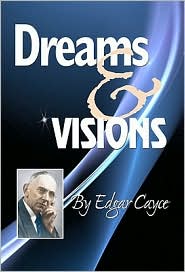Albert Einstein’s Theory of Relativity predicted the existence of wormholes in outer space. By using wormholes or an Einstein-Rosen Bridge to fold the fabric of space-time and traveling in a specially designed spacecraft to travel great distances beyond the speed of light. Taking into account of Einstein’s wormhole theory “shortcut” through space and time, a new wormhole theory developed in 1988 called the Morris-Thorne wormhole hypothesize that traveling through a wormhole would allow a traveler to leave one part of the universe, and instantly appear in another part of the universe by connecting two points in space time through the wormhole, which not only would mean instant travel beyond the speed of light, but also allow time travel as well.
This kind of scientific method for traveling through time has been described and explored in literature and TV and films for decades. In the TV show Star Trek had warp drive to transfers across the galaxy by warping the space-time continuum. In the film Star Wars had hyperspace to achieve faster than light travel enabling starships to reach other star systems. Carl Sagan’s movie Contact and novel by the same name had his space explorer traveling through a series of wormholes designed and set up by alien beings. In the movie and TV series Stargate, had a collection of time space portals that were discovered and used to create artificial wormholes for traveling across the galaxy and time.
Scientists today speculate and consider the possibility of time travel as a real phenomenon. But they also elaborate that such a journey through time could have consequences such as going backward in time and in the far future. For theorists conjecture that traveling through a wormhole would actually lead you to a parallel universe or alternate reality, and that any changes you make there could have dire consequences. This could establish a new time-line, a series of events and scenarios, that could affect the past, present, and future.
The time traveler may find himself materializing in a completely identical universe, but in actuality on a parallel world very much like his own, however, in an alternate reality setting. But with subtle differences that could range in the infinite possibilities of choices made by counterparts living on that parallel world. Such was the case demonstrated in the science fiction series Sliders in the mid-1990s. A young scientist had created a device using the Einstein-Rosen Bridge theory to slide into alternate realities and found him and his companions lost in a series of multi-universes where all of history and futures scenarios are played out.
The mere act of time travel seems risky at best. The use of complex physics and highly sophisticated machinery would be needed to achieve desired results. For if time travel actually exist and some speculate that it could be feasible in the near future. Then where are all the time travelers today? Carl Sagan, an American astrophysicist and astronomer proposed that highly advanced humans from the future could be here in our present time as time travelers, but are secretly in disguise, and unrecognizable as such. For visitors such as these would not want to upset the time-line and change their own future by dabbling into the headlines of today.
But British theoretical physicist Stephen Hawkins has suggested that maybe there are no time travelers at all, because there are no time traveling tourists flocking among us today. He proposes that time travel is very difficult to achieve and that even future generations might not be able to travel far back into time itself. There is room for arguments on both sides of this time traveling debate. For progress of the future is limited only by our imagination.
General relativity theory states that it is possible to travel through time. Using and understanding theoretical physics such as String Theory that combines quantum mechanics and general relativity into a quantum theory of gravity. Scientific experiments in quantum teleportation have demonstrated that sub-atomic particles can be transmuted or beamed at great distances. Sounds like science fiction? Even the United States Air Force has invested in a study program of possible ways to teleport humans and objects through space, and some believe there is other programs design to transport people through time itself. Given the enormous amount of energy and cost of such a program of traveling through time some believe this to be a waste of time and an unattainable goal to achieve. Many argue that we are decades if not centuries away from creating an actual real time machine.
As our technology advances and our understanding of how the universe works. Inevitably, everything that was once considered fiction has become a reality and commonplace. If modern science can someday achieve an actual working time machine, then traveling into the future as well as the past seems likely. For those who advocate that time travel is theoretically possible have stated that we merely have to look at the past for clues of time traveling visitation. In ancient history there are countless stories of possible time travelers who appear and disappear throughout history, seemingly immortal.
Sliders - The First and Second Seasons
Star Wars Trilogy
Contact [Blu-ray]






























0 comments:
Post a Comment